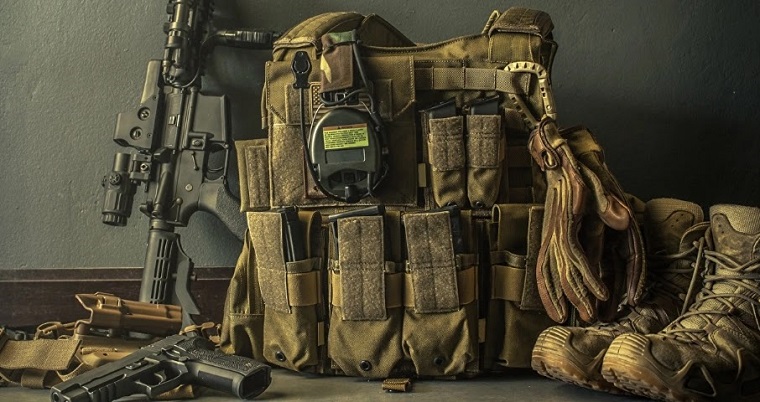We know that ballistic vests save lives and that bulletproof vests are a must-have for any professional employee. But what do you need to know to extend the life of this equipment?
Caring for body armor isn’t difficult, but it’s important to do it right. Start by reading the manufacturer’s care instructions that come with your vest, which should tell you how to clean and store the armor. It’s also important to make sure your armor fits you properly.
Here are seven dos and don’ts for proper body armor cleaning and care to keep your ballistic armor in good shape for as long as possible.
READ CARE INSTRUCTIONS
Let’s be honest – most of us don’t bother reading the instructions that come with a new purchase. Whether you receive instructions with your vest or you have to download them from the Internet, it is important to read and follow them to avoid accidentally damaging your vest and voiding your warranty. The manufacturer’s instructions should explain how to clean and store the armor.
It is very important that buyers read the instructions carefully and follow them if they really want to get the most benefit and maximum protection from their vests for years to come.

DO NOT KEEP YOUR ARMOR IN A WET ENVIRONMENT
Soft ballistic armor can stop a bullet, but it is not machine washable. Typically, Kevlar / Aramid packs are placed inside a waterproof cover, which is then inserted into an inner or outer vest. Make sure the waterproof seal is not broken, then you can wet clean without damaging the fiber of the bag.
But remember that submerging a tightly woven fabric like Kevlar in water will loosen the material, causing it to degrade and break. When the fibers weaken and separate, you will lose protection. The weave begins to relax, and that’s when the bullets break through. This material cannot do its job if these fibers are too loose.
In short, washing soft armor will turn it into heavy fabric with no ballistic benefit, so don’t put it in the washing machine. Also, do not dry clean it.
You can wash the vest itself separately on a “delicate wash”, but hang it up to dry thoroughly afterwards and do not use fabric softener. Be sure to remove any ballistic panels, trauma plates, and possible straps from it first and clean them separately, and only assemble the armor after the plate carrier is completely dry.
CLEAN THE ARMOR
“Do not wash armor” doesn’t mean you can’t clean it. Like anything else you wear, your armor naturally absorbs sweat and gets dirty, so it needs to be freshened up. You can do this with a little soap and water with a clean cloth, then wipe off the excess moisture and hang to dry.
7 rules for proper cleaning and storage of your ballistic vest – 1
How often you clean your armor is up to you. If it’s cold and you’re not sweating, you’ll likely be able to use it longer between washes than you would in the sweaty summer months.
Be sure to use a mild soap such as laundry soap or baby wipes. Avoid alcohol or bleach wipes, as these chemicals can destroy the ballistic material.
Carefully inspect your armor for holes or leaks as you wipe it down. If the outer waterproof membrane is broken, the inner filling of the armor package can get wet and collapse, losing its ballistic protective properties.
HANG THE ARMOR TO DRY
Do not put it in the washing machine, dry clean it or use an electric dryer. Allow your vest to air dry naturally.
Although certification tests like NIJ include extreme temperatures, it is best to store the body armor in an apartment and in a cool, dry place to extend its life.
TWIST YOUR NEW ARMOR TO INCREASE COMFORT
Although it may seem counterintuitive, try gently twisting your new soft body armor to make it more comfortable and a little softer faster. The only way to make a vest more comfortable is to wear it as you would with leather shoes
Some manufacturers recommend that when you get a new vest, you remove the ballistic panels from the carrier when not in use, roll them up, and secure them with rubber bands. Repeat the process between uses two to three times in each direction, alternating horizontal and vertical rolling, for a more comfortable fit.
Be careful not to wrinkle the vest as you twist and roll it.

WEAR A SHIRT OR T-SHIRT UNDER YOUR VEST
Ballistic vests are designed to protect you from bullets, but they don’t have to be comfortable. The basic outer body armor designed for your official use keeps the ballistic material away from your skin, but the concealed body armor requires at least some clothing underneath, such as a t-shirt, that protects against moisture and prevents chafing on the skin and minimizes the smell of sweat on the vests
KEEP THE MANUFACTURER’S WARRANTY
These documents will contain important information, such as the certified service life, so you know when it’s time to replace the armor. In general, this should be five years for soft armor and up to 10 for hard plates. Check your paperwork to be sure, as different manufacturers may offer different warranties.
